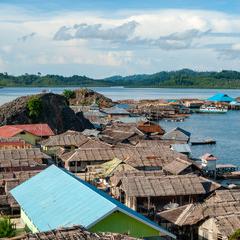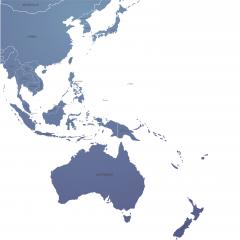The 2023 UN Secretary-General’s report on R2P examines the risks of atrocity crimes and development and acknowledges realising progress towards the Sustainable Development Goals (SDGs) will require addressing the risk factors of atrocity crimes.
Presented at this year’s UN General Assembly debate on the responsibility to protect and the prevention of genocide, war crimes, ethnic cleansing and crimes against humanity, the report noted that sustainable development relies upon peaceful, just, and inclusive societies, and that economic growth and poverty reduction are critical for societies to resist and mitigate atrocity crime risks. As such, furthering the SGDs could also be considered to further atrocity prevention.
George Okoth-Obbo, Special Adviser of the Secretary-General on R2P, introducing the report at the opening of the debate, noted that the link between development and atrocity crimes has not been explored as thoroughly as other typologies, despite atrocity risks being rooted in developmental fractures.
“The daily toll of targeted and intentional mass murder, forced displacement and other untold suffering continues to hang over our common humanity,” he said. The annual debate was a reminder of the responsibility of States to protect populations against atrocities. “The lives of millions depend on that responsibility being given meaning,” he said.
Since the adoption of the SDGs in 2015, various global challenges have impeded progress towards their achievement. The COVID-19 pandemic and the uneven recovery from it, combined with enduring armed conflicts in Ukraine, Myanmar and elsewhere, have created instances of food, water and energy insecurity that have seen SDG targets stagnate.
Furthermore, environmental factors such as natural disasters combined with climate change, have exacerbated chronic development issues such as poverty and food insecurity, which in turn can aggravate inter-communal disputes along ethnic or religious lines.
Combined with structural risks relating to underdevelopment, such as discriminatory ideologies, lack of justice and chronic impunity, these factors heighten risks of atrocity crimes occurring and set back the progress of the SDGs.
To counter this circumstance, holistic prevention efforts are critical. The international community has the tools needed to prevent atrocities; what is needed is a unified approach in utilising them by enhancing cross-cutting actions in development, human rights, and peace and security.
Ivan Simonovic, speaking on behalf of the Group of Friends of the Responsibility to Protect, said the millions of people currently affected by persecution and violence demonstrates why the R2P doctrine needs to be at the heart of the international community’s mission to advance sustainable development. He echoed the need for a holistic approach as noted in the report, saying greater cross-departmental collaboration, including with the UN Office on Genocide Prevention and R2P, is necessary for the UN to enhance its atrocity prevention capacity.
To address the risks forming at the intersection between development and atrocities, the Secretary-General’s highlights the ways that States, as holders of the primary responsibility to protect, can promote sustainable development and prevent atrocity crimes.
Along with States, the international community has a role in preventing atrocities, as they also do in furthering development. International financial institutions and public development banks, along with the private sector and civil society, should integrate R2P into development activities. By being sensitive to atrocity crime risks, the Secretary-General noted these actors can then apply the principle of ‘do no harm’ to their activities to not worsen risks of atrocities and leverage existing programs to monitor risks.
Warning of emerging atrocity risks was a theme picked up by Australia during the debate on the report. Australia’s representative, H. E. Dr Fiona Webster, noted atrocities do not happen without warning, but instead escalate over time. If States are unwilling or unable to protect their populations from atrocities, the risks of those atrocities being committed increases. Webster urged States to address hostility towards various societal groups, including women, girls and LGBTQIA+ people. “The fate of at-risk populations is not pre-ordained,” she said. “It never was. It never is.”
Central to this prevention is the incorporation of civil society and those affected by atrocity crimes into prevention efforts. These sections of society are often the first to witness and detect early warning indicators of atrocity crimes. They are also ideally placed to best understand how post-conflict peace and development can benefit communities and foster long-term sustainable growth. Ivan Simonovic repeated these sentiments in the debate, stressing how the expertise of civil society actors should substantively inform discussions among policy- and decision-makers, which he said, should also include various UN offices.
Finally, the Secretary-General’s report called on all UN member States and international development actors to implement a set of recommendations aimed at integrating sensitivity to atrocity risks into development activities. This includes ensuring aspects of communities affected by development programs, such as minority and indigenous populations, women, youth, and traditional leaders, be included in the design and implementation of such programs to better counteract any risks of atrocities while still furthering the SDGs.
The full report for 2023 can be read on the Annual Reports by the UN Secretary-General page, along with reports from previous years.


